In 1908, a Roman Catholic priest and writer, Adrian Fortescue, published his landmark book The Orthodox Eastern Church, presenting Orthodoxy to the English-speaking world through the eyes of a very well-informed but also very papist Roman Catholic from England. In one section of the book, Fortescue surveys the Orthodox world, telling the recent history and then-current situation in each of the world’s autocephalous churches. Today, we’re publishing the first section of that survey, covering the four remaining members of the ancient Pentarchy (Constantinople, Alexandria, Antioch, and Jerusalem), along with the Church of Cyprus. After that, we’ll publish Fortescuse’s account of the Church of Russia, and then we’ll move on to the rest of the Orthodox world. The full text of Fortescue’s book is available for free at The Internet Archive.
The Patriarchate of Constantinople
“The Great Church” is the official name for the Patriarchate of Constantinople, which still takes precedence of all the others. What is now left of this patriarchate after all the national Churches have been cut off from it, covers as much of the present Turkish Empire as is not occupied by the other patriarchates or Cyprus, that is to say, Turkey in Europe and Asia Minor; although even in this greatly reduced territory wherever there are Bulgars the Patriarch’s jurisdiction is disputed by their Exarch. As we shall see, in the Great Church the title “Metropolitan” has become the common one for bishops, even when they have no suffragans. The Ecumenical Patriarch rules over seventy-four metropolitans and twenty other bishops. Canonically he has no jurisdiction outside of his own patriarchate. On the other hand, he is still the official civil head of the whole Roman nation in the Turkish Empire, and the other Orthodox Patriarchs (of Alexandria, Antioch, and Jerusalem), as well as the bishops of Cyprus, belong to that nation. So the Ecumenical Patriarch has a sort of civil authority over them; for instance, they can only approach the Porte through him.
The Phanar has constantly tried to change that vague civil authority into real ecclesiastical jurisdiction, and for a long time it succeeded. From the Turkish conquest till the beginning of the 19th century the other patriarchs were very poor and helpless, and during that time the Patriarch of Constantinople reached the height of his ambition, and became something very like a Pope. He especially claimed the right of confirming the election of the others, and no one was strong enough to resist his claim. Now, however, that Russia is taking up every one’s cause against the Phanar, these other patriarchs are able to assert their complete independence of every one save Christ and the seven general councils. The last attempt to judge of an election was made by Germanos IV of Constantinople (1842-1845 and 1852-1853), in the case of Jerusalem in 1843. But the bishops of Jerusalem indignantly denied his right to interfere, and as Russia was on their side Germanos had to give in, after the quarrel had lasted two years. No such claim has been advanced since, although the Phanar still tries to assert a kind of shadowy jurisdiction by keeping a permanent legate at the other Patriarchs’ Courts. For the present it has succeeded at Antioch and Jerusalem, but has failed at Alexandria, where a very energetic and strongly anti-Phanariote Patriarch under the English rule can afford to defy it. A similar case is that of the trouble about Sinai in 1866.
The only remnant of jurisdiction beyond his patriarchate still left to the honorary chief of the Orthodox Church is the much-disputed right of consecrating the holy chrism. Undoubtedly, in the East originally, as in the West always, the holy chrism was consecrated by the bishop who would use it. Then, apparently only because the chrism in the East is a very difficult and expensive thing to prepare, the custom grew up of making and consecrating large quantities at Constantinople, and sending portions to all the other bishops. Since about the 13th or 14th century the Patriarchs of Constantinople have claimed this as an absolute right. They alone can lawfully consecrate chrism. All other Churches, whether otherwise independent or not, must receive it from them. However, lately especially, this claim, too, has been hotly disputed. Russia consecrates her own chrism since the 17th century; Roumania has begun to do so, too, after a fierce quarrel. I believe that all the other Orthodox Churches still receive theirs from Constantinople, though not always very willingly.
The Patriarchate of Alexandria
The next Church in rank is that of Egypt. As the great majority of Egyptian Christians are Copts, and so out of communion with the Orthodox Church, the Orthodox Patriarch of Alexandria has only a small flock, about thirty-seven thousand souls. The Orthodox Patriarch of Alexandria claims, of course, to be St. Mark’s successor, just as does his Coptic rival. In the 17th and 18th centuries he lived at Cairo; now he has returned to Alexandria, Since 1672 the sees of this patriarchate have been reduced to four; their bishops are all called metropolitans, although they have no suffragans, and they do not reside in their titular dioceses (Ethiopia, Cairo, Damietta, and Reshid), but form the Patriarch’s Curia.
Quite lately there has been trouble in this Church, as in the other patriarchates. Photios was one of the most determined opponents of Russia in Syria. After having been Patriarch of Jerusalem for a short time, he was elected to Alexandria when the late Patriarch Sophronios died in 1899. It is said that the Russians sent him there to get rid of him. He took possession of his see in September, 1900. But the Phanar would not have him there, and persuaded the Sultan not to give him the Berat, without which he could not reign. At last, in September, 1900, he got his Berat and took possession of his see. At once he was met by the complaints of the Orthodox Arabs, who would like a Patriarch of their own race. For a time the Ecumenical Patriarch, Constantine V, still refused to acknowledge him. But since then Constantine has been deposed, and Joachim III restored at Constantinople. I believe that Joachim recognizes him, and that things have now quieted down. It is said that His Beatitude speaks Arabic quite well, and is conciliating his discontented subjects.
However, the troubles are not over yet. Lord Photios has just categorically refused to allow a legate of the Ecumenical Patriarch to reside at his court, and the Phanar still counts him as an enemy. A weak point in his position has been this : he has only three metropolitans. Now the Canons require, for the election of a bishop, a synod of at least three members besides the patriarch. As soon, then, as a metropolitan dies, Lord Photios only has two left, and cannot canonically elect a new one. So he has to send to Constantinople to ask the synod there to elect for him. Since the whole of his policy, as that of the other patriarchs, is to shake off any pretence of authority still claimed by the Phanar, this obviously very much weakens his position. The latest news from Alexandria is that His Holiness is about to reorganize the Church of St. Mark, so as to do away with this inconvenience. Of course, he has only to found two or three more titular sees.
The Patriarchate of Antioch
The Orthodox Church of Antioch is now only a shadow of what the great “third see” was in the days before Ephesus. The Nestorian and Jacobite Churches are formed at her expense; she has lost Palestine and Cyprus ; the Byzantine Patriarchate has filched all Asia Minor from her, and there are a large number of Uniates in these parts. (There are no less than seven Churches, each of which represents a fraction of the old Antiochene Church.) So the Orthodox Patriarch of Antioch, like his brother at Alexandria, lives rather on memories of his past splendour than on any practical importance. He rules over twelve metropolitans — all that are left of the hundred and fifty sees that once obeyed his predecessors — and about two hundred and fifty thousand Orthodox subjects, nearly all Syrian Arabs, who know no Greek. He also has two or three titular metropolitans to form his court. He now lives at Damascus.
There has been trouble at Antioch, too, lately. Since 1724 all the Orthodox Patriarchs have been Phanariote Greeks, who could not, as a rule, even speak Arabic. However, at last the Arab-speaking people, who were always discontented with that arrangement, got their chance. In 1899, the see being vacant, they elected Meletios, Metropolitan of Laodicea, to be Patriarch, and the Russian Palestine Society warmly took up his cause.
Meletios was an Arab, so the Phanar would not have him. Of course, as always, the only question was, what the Sultan would decide. The Phanar, backed by the French Ambassador, implored the Sultan not to give him his Berat; the Russian Ambassador insisted on his having it. For a whole year the Sultan wavered, the see was vacant, and Meletios hoped and doubted. Then, of course, Russia won; the Berat arrived in 1900, and Meletios became Patriarch. But the Phanar, the Greeks of Jerusalem, and the Greek Church still obstinately refused to recognize him. On the other hand, the Russian and Roumanian Churches were on his side. He was pointedly left out in the last Encyclical from Constantinople, and all the Greek papers spoke of him as a schismatical intruder, and persecutor of the Greek clergy in his patriarchate. On February 8, 1906, Lord Meletios died at his residence at Damascus. In June, Gregory Hadad, Metropolitan of Tripoli, also an Arab, was elected as his successor, and the schism still continues.
The Patriarchate of Jerusalem
The See of St. James, the “brother of God” has always been the smallest and the poorest of the patriarchates. Its jurisdiction stretches over Palestine from Ptolemais down to the peninsular of Sinai, of which the extreme point is occupied by the autocephalous monastery. Thirteen metropolitans and about fifteen thousand people obey the Orthodox Patriarch. He lives by the Orthodox monastery of the Holy Sepulchre (the Anastasis).
The modern history of this Church, too, consists chiefly of a series of quarrels and schisms. Since the 16th century all the Patriarchs have been Greeks, whereas the Orthodox people are, of course, Syrian Arabs. When the Synod of Constantinople against the Bulgars was held in 1872, Cyril II of Jerusalem, although he was then in the city, refused to take part in it, or to have any share in the proceedings against the Bulgarian Church. His motive was obvious. The Russians from the beginning had warmly taken up the Bulgarian cause; they were all-powerful in Palestine — indeed, the only protectors of the Orthodox Church there — and Cyril did not dare offend his patrons. But his absence from the synod made all the difference. It prevented the excommunication pronounced against the Bulgars from being the unanimous verdict of all the Orthodox Patriarchs, so the Phanar was very angry with him, and had him deposed, setting up Prokopios in his stead. Cyril was a Greek, but he had taken the anti-Phanariote (“national Church,” or Philetist) side, and Russia was his friend. So Russia and the Palestine Syrians were on his side, still considered him Patriarch, and still kept his name in the Holy Liturgy. On the other hand, the Phanar, the other Patriarchs, and nearly all the rest of the Orthodox world, acknowledged Prokopios.
At last the Russians forced Prokopios to resign (1875); Cyril died, and Hierotheos was elected Patriarch. But he, to every one’s surprise, sided with the Phanar against the Bulgars. The Russian Government then fell foul of him, too, and seized the opportunity to carry out a plan it had long contemplated. The Holy Sepulchre possessed some property in Bessarabia (in Russian territory). The Government now said it would relieve the Patriarch of all anxiety concerning this distant property, and administer it for him. How it did so may be imagined. It promptly proceeded to pay itself one-fifth for its trouble, confiscated two-fifths for what it described as “pious purposes” in Russia, and sent only two-fifths of the income to Jerusalem. All the Greek world is still helplessly furious at this robbery.
Hierotheos died in 1882. There were then three candidates for the vacant see — Nikodemos, Gerasimos, and Photios, who is always a determined opponent of Russia, and who, as we have already seen, is now Patriarch of Alexandria. Photios was elected quite canonically, but the Russians made the Sultan refuse him the Berat, and give it to Nikodemos instead. Gerasimos became Patriarch of Antioch in 1885. Photios had to go to be a monk again at Sinai. But he did not rest there in peace; the Phanar was for him at that time, and by 1890 they had persuaded the Sultan to change his mind and to depose Nikodemos. Photios arrives at Jerusalem with the Sultan’s Irade, and Nikodemos is made, as usual, to sign a document declaring that he is too old to reign any longer, and that he wishes to go back to his monastery. He is still there at St. George’s Laura at Halki, a very pious and kind old gentleman, though he has been heard to whisper to visitors that the Orthodox Church would get on all right were it not for Lord Photios. But the Russians said that whatever happened, they would not have Photios at Jerusalem.
So the third of the original candidates, Gerasimos, was persuaded to resign the more honoured See of Antioch and to become Patriarch of Jerusalem. Photios became Metropolitan of Nazareth. But that city, too, is a great Russian centre, and he was still a thorn in their side, till, in 1899, the old Patriarch of Alexandria, Sophronios, died. We have seen how the Russians then got rid of Photios by helping his candidature to that see, where they have, as long as the English rule there, no interests, and how he has since become an enemy of the Phanar. In 1897 Lord Gerasimos of Jerusalem died, and again there was a great struggle between the Russian and Greek parties. The leader of the Russian side is Euthymios, Archimandrite of the monastery of the Anastasis. This is the person who was responsible for the outrage against the Latin Franciscans in November, 1901. However, the Greek candidate, Damianos, Metropolitan of Philadelphia, was elected, and he is now Patriarch. Lord Damianos has been staying for a long time at Constantinople in the charitable hope of helping to settle some of the disputes that rend the Orthodox Church, the quarrel against Gregory of Antioch, the trouble in Cyprus, and, above all, the great Bulgarian schism. His Holiness has now returned to his see. The quarrel about Mount Sinai also concerns the Church of Jerusalem.
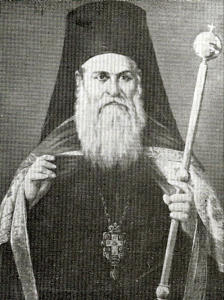
Archbishop Kyrillos II of Cyprus (1909-16) was previously Metropolitan Kyrenia and one of the two Cyrils who competed to become primate of Cyprus.
The Church of Cyprus
We have seen that the Cypriote bishops, on the strength of their succession from St. Barnabas, persuaded the Council of Ephesus to recognize their Church as independent of the See of Antioch. Since then this little Church has had many adventures; it was persecuted by the Crusaders and Venice; and after the Turkish conquest the Cypriote Christians had to submit to the civil authority of the (Ecumenical Patriarch like the rest of the Orthodox. But the Church of Cyprus had been ever since the Council of Ephesus an autocephalous Church, obeying no Patriarch. It is so still, and it ranks immediately after the patriarchates as the fifth Church of the Orthodox Communion. It is true that here, as elsewhere, the Patriarch of Constantinople has constantly tried to usurp some sort of ecclesiastical jurisdiction; but the Cypriotes have always indignantly withstood him, taking their stand on the decree of Ephesus. Except the patriarchates no other branch of their communion has so good an argument for its independence as the decree of a general council, so on the whole Cyprus has always succeeded in its claim. The head of this Church is the Archbishop of Cyprus, who resides at Nicosia; under him are three suffragan metropolitans, and about one hundred and forty thousand Orthodox.
In 1821 Archbishop Cyprian was strangled by the Turks for helping the Greek insurrection. It is unfortunate that when we come to the present state of these venerable Churches there is nothing to chronicle but the story of violent quarrels. One of the worst of all is now rending the Church of St. Barnabas. Lord Sophronios the Archbishop died in May, 1900. The See of Paphos was then vacant, the only Cypriote bishops left were Cyril of Kyrenia and Cyril of Kition. Each became a candidate for the Archbishopric, and their rivalry has torn the Church of Cyprus, indeed, the whole Orthodox world ever since. My Lord of Kition is a politician and strongly Philhellenic in his sympathies. His enemies say that he is a Freemason. My Lord of Kyrenia is a very pious Churchman and godly bishop. His enemies say that he is a poor, weak creature, quite unfit to guide the Cypriote Church.
All the Philhellenes are for him of Kition; the English Government would prefer the Kyrenian. But, scrupulously just and respectful of established order as English authorities in the Colonies always are, the High Commissioner for Cyprus told the ecclesiastical authorities to choose an archbishop exactly according to precedent and their Canon Law; the Government would then acknowledge him. But their Canon Law leaves the final appointment to the Holy Cypriote Synod, and that synod has only two members — these very two candidates. To make a long story short, the storm has raged ever since, and is still unabated. The Ecumenical Patriarch has repeatedly tried to interfere, and has been told each time that he has no jurisdiction in Cyprus. The Orthodox, long accustomed to look to an unbelieving Government to have their quarrels settled, have several times appealed to the English Colonial Office, and our Mr. Joseph Chamberlain has told the Ecumenical Patriarch that the Government would allow no interference in the affairs of the Church of Cyprus.
The Kyrenian party tried to get a majority by filling the third see, Paphos, with one of their friends. So they chose the Archimandrite Panaretos Duligeris of Athens, who had already written strongly against Cyril of Kition. But the Phanar informed them (quite correctly) that as long as the Primatial See is vacant they cannot canonically fill any of the others. Again they answered (equally truly) that the See of Constantinople has no rights over their island, and that they would take no notice of its objection. Only Panaretos cannot get ordained. The Church of Greece, once so bitter an enemy of the Phanar, is now making common cause with it against the Slav peril; so Panaretos has been seeking in vain for three Greek bishops who would agree to ordain him, and he remains at Athens, Metropolitan-elect (albeit uncanonically) of Paphos, and he has no vote in the Cypriote Synod.
One need not tell of all the endless ramifications of this quarrel, how the Parliament of Cyprus is divided into Kitiacks and Kyrenians, how Damianos of Jerusalem is vainly trying to make these two Cyrils agree to elect some third person, how Meletios of Antioch put in his oar — of course, against the Phanar — how politicians and canonists, ministers and deputies, are travelling about seeking to strengthen their sides. Meanwhile the See of Cyprus is still vacant, and one of the endless questions that divide the Orthodox all over the East is that of whether they are Kitiacks or Kyrenians.
These five Churches — the four patriarchates and Cyprus — are the old elements of Eastern Christendom, and so, although they are neither in size nor power the most important branches, they take precedence in the above order. We now come to the Churches that have been formed by separation from the Byzantine Patriarchate. They have no established order of dignity among themselves, so the obvious arrangement will be according to the dates of their independence.
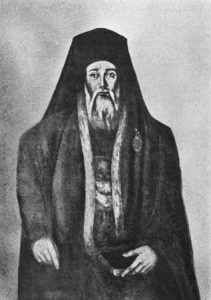
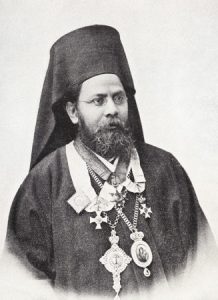
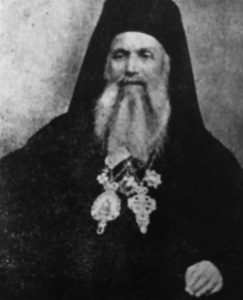
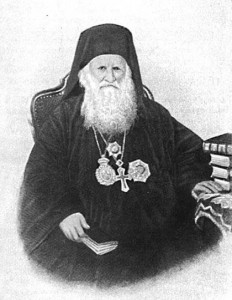
Adrian Fortescue made several false statements in his writings against the Orthodox Church, citing the corrupted letter of Sardica to Pope Julius, then ignorantly commenting, “It is difficult to understand how anyone can dispute that the canons of Sardica in 344 recognize the jurisdiction of the Pope over all other
bishops.” Soon after he cites a spurious Arabic canon of Nicea, writing, “That these are genuine
pronouncements of the Council in 325 we do not claim. … At any rate, they are old enough to come within our period.” (The Early Papacy: To the Synod of Chalcedon in 451, London, 1920). But these Arabic canons date many centuries after the Council of Nicaea and cannot by any means be cited for the Papacy.
Also, in the very book you cite, Fortescue writes:
Adrian Fortescue also denies that Honorius was a heretic, saying:
“[Pope] Leo [II.] examined the Acts and confirmed them all, except that he distinctly refused to acknowledge the condemnation of Honorius as a heretic. He, too, condemned him, but only because “he had not crushed out the flame of heresy at once, as behoved his Apostolic authority, but rather fostered it by his negligence.” So the statement made by the council that Honorius was a heretic, not having been confirmed by Rome, affects us Catholics as little as the Canons of Constantinople I. …The Byzantines never cease making the most of Pope Honorius’s case, till at last they persuade themselves that he, whose fault in any case only consisted in seeming to accept what their Patriarch, Sergius had written, had been the original author and founder of the whole Monothelite heresy.” (Adrian Fortescue, The Orthodox Eastern Church, Part I., Ch. III., pp. 80, 96, London: Catholic Truth Society, 2nd Ed., 1908)
Fortescue gives no evidence for his latter claim, and the very fact that the 7th Ecumenical Council reiterated the condemnation of Pope Honorius for heresy is sufficient proof against any notion that Pope Leo II nullified the 6th Council’s anathematization of Honorius for heresy and replaced it with one of merely negligence.
Regarding the canon of Trullo, in this book Fortescue falsely states that the Venerable Bede called Trullo a “reprobate synod” (pp. 95 – 96), and claims that “The West has always refused to acknowledge it”, which is manifestly false.
Fortescue makes several other errors, and falsified historical information, either out of deliberate fraud, negligence, or ignorance, and he is not a man to be trusted.
I agree that Fortescue is not someone to be trusted without question. In the section I published today, on the Church of Russia, his bias is rather appallingly on display — and at the same time, it’s instructive to hear the perspective of an informed Roman Catholic observer on Orthodoxy in his day. Unfortunately, if you want to find summaries of Orthodoxy in the modern era, you’re almost forced to rely on non-Orthodox writers. I find commentators like Fortescue useful primarily as a jumping-off point for deeper research, rather than authorities in and of themselves.